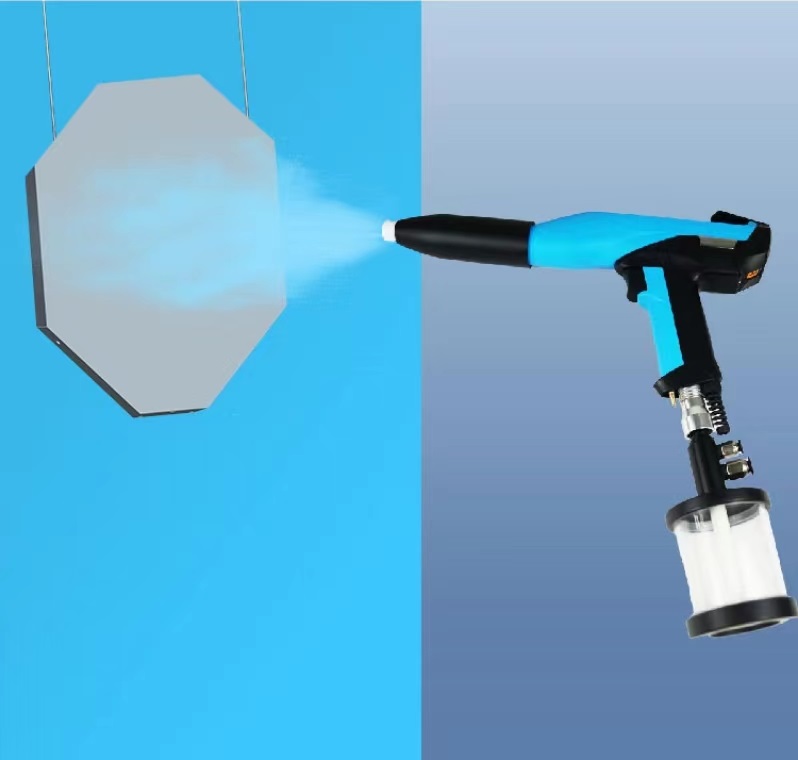Electrostatic spraying is a highly efficient method for applying coatings to surfaces, particularly in industrial settings where corrosion resistance and operational efficiency are crucial. Here, we summarize the key aspects of electrostatic spraying:
Principle of Electrostatic Spraying
Electrostatic spraying utilizes the physical phenomenon of electrophoresis:
- Charge Application: Paint particles are atomized and given a negative charge using a high-voltage electrostatic generator.
- Electric Field Effect: The workpiece, positively grounded, attracts the negatively charged paint particles due to electrostatic attraction.
Coating Deposition: This attraction ensures that the paint particles uniformly coat and adhere to the surface of the workpiece, forming a consistent protective layer.
Types of Electrostatic Spraying
1. Air Atomizing Spraying:
- Utilizes compressed air to atomize the paint, creating a fine mist.
- The paint mist is then charged electrostatically before being directed towards the workpiece.
- Efficient and suitable for a wide range of coatings.
2. Rotary Cup Atomizing Spraying:
- Involves a rotating cup where paint is centrifugally spread and atomized.
- The atomized particles gain a negative charge and are directed towards the positively charged workpiece.
- Useful for achieving uniform coverage and minimizing overspray.
Equipment Required
- High-Frequency High-Voltage Electrostatic Generator: Provides the necessary voltage to charge the paint particles.
- Spray Gun: Includes a metal handle, nozzle, and pole needle or rotary cup for atomizing and charging the paint.
- Paint Tank (Pressure Tank): Stores the paint and uses compressed air to feed it to the spray gun.
- Air Compressor: Supplies compressed air for atomization and operation.
- Air Pressure Regulator: Controls and stabilizes air pressure throughout the spraying process.
- PVC Plastic Hose: Transports compressed air and paint due to its lightness and solvent resistance.
Main Process Conditions
- Positioning: Proper positioning of the spray gun and workpiece affects coating quality. Distance from the power grid and between the gun and workpiece is critical.
- Voltage and Current: Input voltage is typically 220 V AC, with DC output voltage ranging from 80,000 V to 120,000 V. Current levels are carefully controlled.
- Paint Pressure and Atomization: Adjustments in paint pressure and air pressure influence atomization quality and coating efficiency.
Operation and Safety
- Efficiency: Electrostatic spraying is significantly more efficient than traditional methods, reducing paint waste and improving application speed.
- Safety Considerations: Due to high voltage (up to 100,000 V), safety protocols are essential to prevent accidents. Operators must be trained and aware of operational risks.
Benefits
- Environmental and Health Benefits: Minimizes airborne paint mist, improving workplace conditions and worker health.
- Quality and Efficiency: Enhances coating quality, reduces overspray, and increases throughput compared to conventional methods.
- Versatility: Suitable for various coatings and adaptable to different surface types and sizes.
Electrostatic spraying offers a superior alternative to traditional painting methods in terms of efficiency, coating quality, and worker safety. Its application spans diverse industries where surface protection and efficiency are paramount. By leveraging this advanced technology, manufacturers can achieve higher quality finishes with reduced environmental impact.




